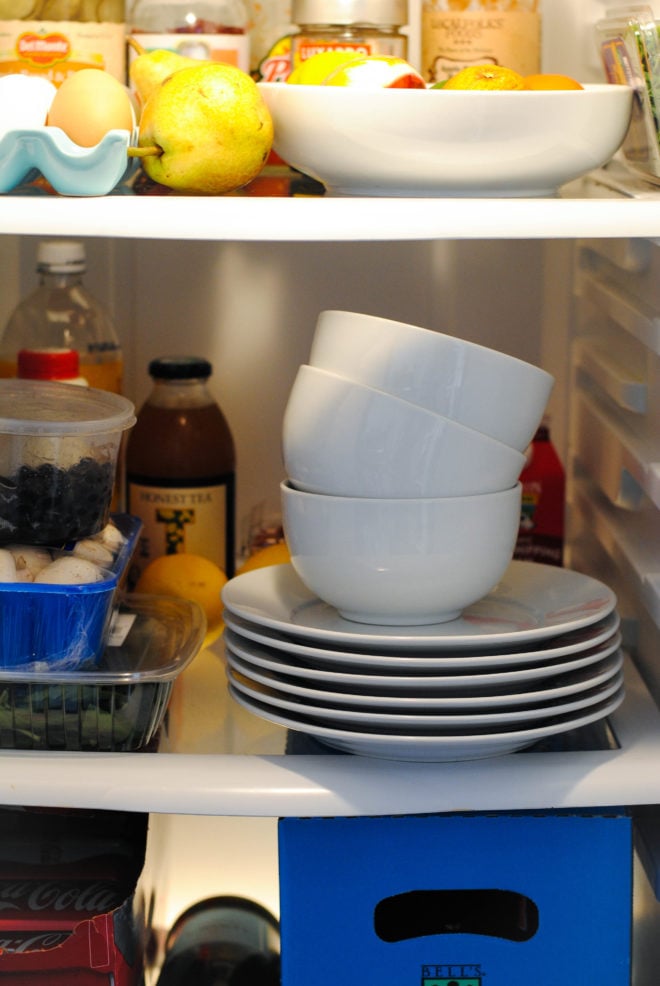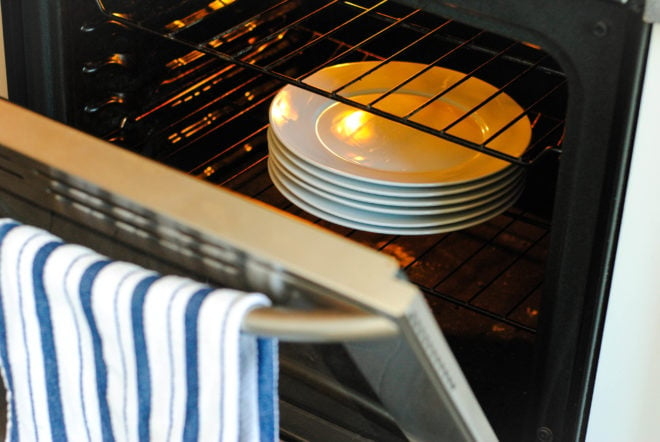Culinary School Lesson: Hot & Cold Plates

In my “What I Learned in Culinary School” series, I’ll be sharing tips and tricks that I learned from two years of working with some of the country’s best chefs. This will include big things like learning to work efficiently, and small things like how to cook bacon perfectly. All of them will be applicable to your home kitchen, making you a faster, better, and more confident cook.
A friend recently asked me, “No offense, but are you, like, really picky about restaurant food now that you’ve gone to culinary school?” I told him that actually, no, I’m pretty easygoing. I hardly ever send food back to the kitchen. With one exception. Hot food has to be served hot, and cold food has to be served cold. Bring me a cold bowl of soup, or a warm and wilted salad, and I will send it back every single time.
Neighborhood dive bars get this wrong once in awhile, while upscale fine dining restaurants hardly ever misstep in this area. The reason is one simple activity that can elevate home cooking into the realm of a restaurant-quality meal. To demonstrate, I’m even giving you a peak into my fridge for a second column in a row (what was I thinking?).

Serving a side salad or frozen dessert? Grab your salad plates or bowls and let them chill out in the fridge while you prepare your Blue Apron dinner. Twenty minutes is all it should take (do it even faster in the freezer!). By the time your dinner is ready, you can take the frosty plates out of the fridge, plate up your salads, and take them right to the table. Your greens and vegetables will stay cool, refreshing and crisp while you eat, even on a warm summer day.
Making a pot roast or casserole on a cold winter day? Nothing is worse than cold casserole. Most roasts and casseroles need to stand for a few minutes after they come out of the oven, before serving. Take this time to reduce the oven temperature to 200 degrees F, and throw your plates in there while your roast rests. In just five minutes, your plates will be warmed through and ready for you to serve up your piping hot dinner. You’ll appreciate that it stays hot while you take your time eating it.
This maneuver was an absolute requirement when working at the student-run restaurant at my culinary school. It made every dish that left the kitchen seem like it could be served in a four-star restaurant anywhere in the world. One tip? Just don’t put your plates in the oven and forget about them. This may have happened just a few times at school. And when the chefs arrived in the morning and noticed plates that had been “warming” in the oven for the last 18 hours, well, there was yelling. Luckily, you won’t have a Certified Master Chef breathing down your neck in your home kitchen. Relax and enjoy your hot food being HOT, and cold food being being COLD.


Im often dealing with cold foods not being cold enough and hot foods not staying warm, so I really am looking forward to reading this post!
Thanks so much, Pamela – I hope it’s helpful to you.